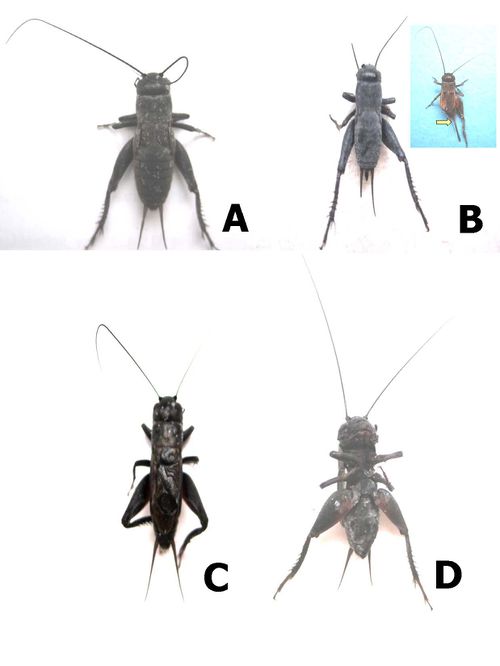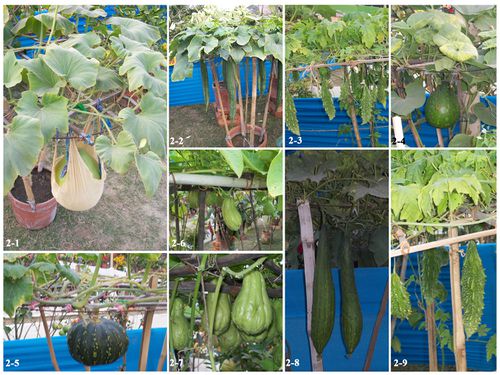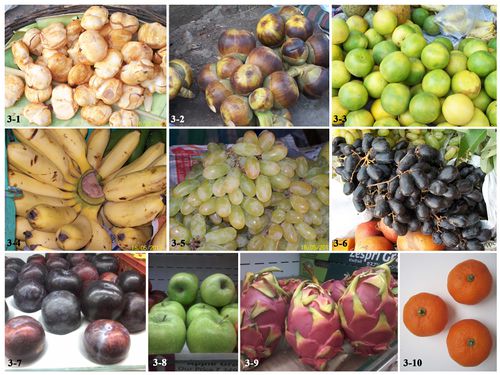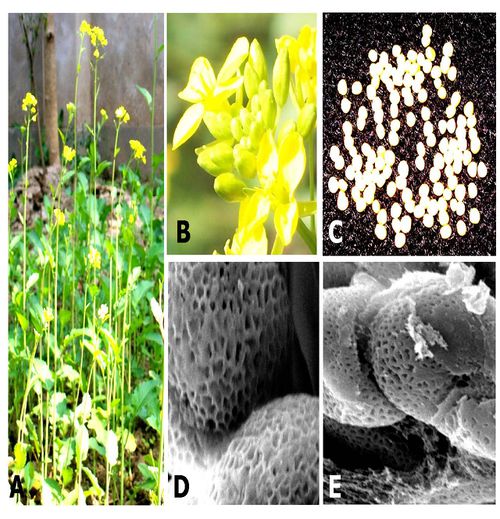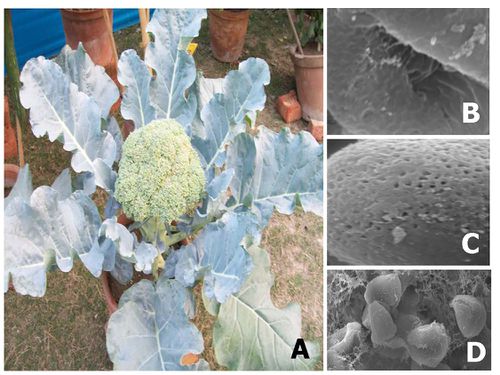Brassicaceae: An agri-horticulturally important family
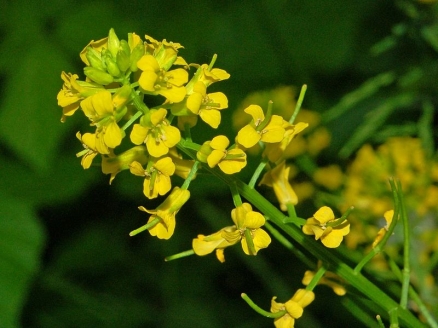
Barbarea vulgaris - Cerreto, Alessandria, Italy (Source: Hectonichus (Own work) CC-BY-SA-3.0 (http://creativecommons.org/licenses/by-sa/3.0) via Wikimedia Commons)
Brassicaceae (Cruciferae) is an important dicotyledonous, angiospermic (true flowering) plant family with a global distribution. Species belonging to the Brassicaceae are well suited to a wide range of intensive and low input agri-techniques. They are primarily adapted to temperate and sub-tropical climates depending on the species. Brassica species play an important role in global agriculture and horticulture.
Contents
Food and Oil
The genus Brassica was described by Linneus in 1750 based on B. oleracea. Brassica contains a number of important species and wide genetic diversity. The species are characterized by a wide range of adaptations that have been domesticated into crops including oilseed rape/canola and swede (Brassica napus L.); cabbage, cauliflower; broccoli, brussels sprout (B. oleracea L.); turnip, Chinese cabbage and pak choi (B. rapa L.) and mustards (B. nigra (L.) W.D.J. Koch, B. alba (L.) Rabenh., B. juncea (L.) Czern., B. carinata A. Braun).
There has been regional specialization of vegetables in this family, e.g. B. rapa vegetables in South East Asia and B. juncea oil crops in south Asia (Indian subcontinent). The globally famous, Canola oil (Rapeseed 00 or Double Zero Rapeseed) is important edible oil synthesized from different rape plant cultivars from either rapeseed (B. napus) or field mustard (B. rapa) and is considered nutritionally beneficial compared to standard mustard oil. The canola oil is an important contribution by Canadian researchers from the early 70's in pioneering the release of rape cultivar with lower concentrations of glucosinolates and erucic acid.
Brassica L. varieties contribute to the economies and health of people (e.g. by antioxidants, vitamins, anti-cancer compounds, etc.) around the world. Brassica, like many crop species, hasa large andcomplex genome. Brassica genomes are particularly plastic with several crop morphotypes within each species. The species with the higher chromosome numbers, or in other words amphidiploids B. napus, B. juncea and B. carinata, originated from diploid species like B. oleracea, B. rapa, and B. nigra. The chromosome analysis has further suggested an early evolution from a common ancestor (n = 6) and that other related diploid Brassica species (with basic chromosome numbers n = 8, 9 & 10) have evolved via secondary polyploidization. B. napus is known to have originated in southern part of the continent of Europe and is believed tohave beenintroduced into Asia in the early part of the eighteenth century. Brassica rapa is the oldest reported species and is well known for its global distribution. Several Brassica species (B. nigra, B. juncea, and B. carinata) are important mustard crops in sub-tropics constituting North Africa and the Indian sub-continent.
|
Fig 4. White mustard Sinapis alba L. (Syn. Brassica alba, Brassica hirta) plant habit (A),flower showing distinct cruciform corolla representative of the Brassicaceae family (B),characteristic white or yellow colored seed (C) and SEMs of pollen grains (D-E). |
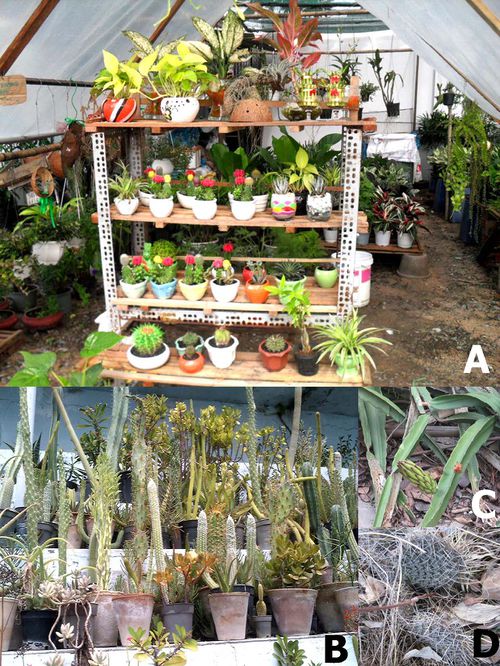 Source: William Cetzal-Ix Source: William Cetzal-Ix
|
|
Fig 5. Brassica oleracea L. (A-C) and Brassica oleracea L. var. gemmifera (D-E). |
==
Plant Genetic Model
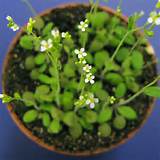 Arabidopsis thaliana. photo www.botanicalgarden.ubc.ca.
Arabidopsis thaliana. photo www.botanicalgarden.ubc.ca.
The family also contains Arabidopsis thaliana (L.) Heynh., a speciesthat is used as a model plant in plant biochemical, metabolic, and molecular biological studies.Building on theprogressthat hasalready been made in A. thaliana, it is expected that the next 10 years should see enormous gains in the knowledge of molecular genetics of Brassica crops.
Currently, molecular marker-based genetic maps are available for major Brassica species. Detailed genetic analyses and molecular investigations of speciesmay help establish an understanding of the evolutionary relationships among them. In addition, understanding the detailed genetic make up of the speciesmight suggest howthey could be saved if threatened with extinction challenges in the future. These techniques hold great promises in unravelling secrets of the species' genetic constituencies as well as suitable tools for analyzing them and finding ways to suitably protect them.
Phytoremediation
Another interesting aspect of this plant familyis that several domesticated and wild species havedemonstratedutility in phytoremediation of toxic metals as well as other organic and inorganic toxic metabolites from contaminated soils.
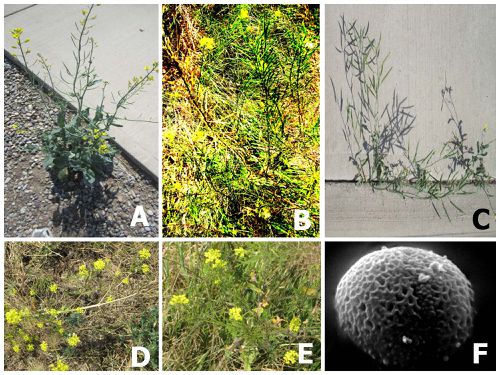 Source: Saikat Basu, own work Source: Saikat Basu, own work
|
|
Figure 7. A-E. Wild canola plants; and F. SEMs of wild canola pollen grain. |
References and Further Reading
- Brassicaceae (Cruciferae) - Flowering Plant Families. http://www.botany.hawaii.edu/facuilty/carr/brassic.htm
- Brassicaceae- Encyclopedia Britannica. http://www.britannica.com/EBchecked/topic/77928/Brassicaceae
- Brassicaceae: Wildflowers of the Mustard Family. http://www.wildflowers-and-weeds.com/Plant_Families/Brassicaceae.htm
- Brassicacea- The Plant List. http://www.theplantlist.org/browse/A/Brassicaceae/
- Angiosperm families- Cruciferae Juss.http://delta-intkey.com/angio/www/crucifer.htm
- Brassicacea- Mustard Family.http://montana.plant-life.org/families/Brassicaceae.htm
- Brassicaceae- The Seed Site. http://theseedsite.co.uk/brassicaceae.html
